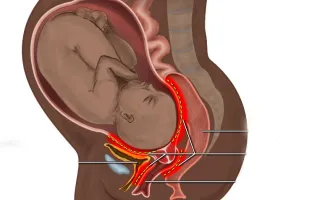This Date in UCSF History: Hospitals in Wartime
Originally published in Synapse on April 22, 1982. UCSF and other Bay Area hospitals participated in a drill of the state disaster system this week.
Public debate over the Department of Defense’s Civilian-Military Contingency Hospital System (CMCHS) continued with publication of independently submitted statements to a recent issue of the New England Journal of Medicine (NEJM).
A statement promoting the CMCHS was submitted by Dr. J.F. Beary, Deputy Assistant Secretary of Defense for Health Affairs, while an opposing, critical statement was submitted by the Executive Committee of Physicians for Social Responsibility (PSR), a nationwide organization of medical doctors opposed to nuclear arms proliferation.
The CMCHS plan basically asks for a commitment by private and community hospitals to provide a set number of hospital beds for “emergency use” by the Department of Defense (DOD) in the case of a “future conflict” fought by U.S. armed forces outside of the U.S.
The DOD developed the plan in order to supplement the 18,000 military hospital beds available now in the U.S., estimating a need for 50,000 additional beds in the case of a “conventional-warfare scenario not involving an attack on the U.S.”
The CMCHS was submitted to governing bodies at Bay Area hospitals last year, and was not adopted by UC or San Francisco General.
The Veteran’s Administration Hospital would be considered part of the Federal military hospital system in the case of such a military conflict.
Beary’s statement documented that 433 hospitals nationally have committed nearly 36,000 beds under the CMCHS plan, therefore allowing for the discharge of “noncritical” civilian patients occupying those beds when the DOD found need for their beds.
The DOD statement mostly detailed responses to previous criticism of the CMCHS. Beary denied previous PSR accusations that the CMCHS was developed to care for casualties resulting from a limited nuclear war.
He noted that “blast and thermal injuries” described in the CMCHS literature could result from either a nuclear war or conventional warfare, while openly admitting that “it would be absurd to deny the possibility that nuclear weapons can be used as long as they exist.”
PSR and many other antiwar organizations have drawn national attention to statements by the Reagan administration that limited nuclear war — that is, the use of tactical nuclear weapons on the conventional battlefield — was considered a definite form of escalation of armed conflict with Soviet forces that the U.S. would not disallow in the course of conventional warfare.
Included in the PSR statement is a quote from administration advisors outlining the likely use of tactical nuclear weapons in the case of a conventional war with the Soviet Union where the Soviets were winning with non-nuclear armaments.
The administration statement clearly outlines a first-strike use of these battlefield nuclear weapons, based solely on the judgment that the U.S. might not be winning, otherwise.
The statement also clearly outlines progression to first-strike use of strategic nuclear weapons if tactical nuclear weapons do not lead to victory.
Although supposedly considered part of formal U.S. “defense” policy during the last ten years, this first strike policy has only recently been publicly articulated by Reagan administration defense officials.
The DOD statement also disputed previous criticisms that the CMCHS plan had not been submitted to Congressional or public hearings for debate by the persons affected aby war preparations.
Cited were articles in United Press International and a medical journal, as well as investigations by the General Accounting Office (GAO) and presentation of the plan before Congressional hearings in 1979.
PSR notes, though, that the GAO reports concerning the CMCHS, along with evaluations by other government agencies, were repeatedly critical of the plan for its lack of coordination between civilian and military systems.
The GAO went to point out that such an extensive invasion of the private sector by the federal government (under an administration which promulgates less federal involvement) would require specific congressional legislation and conscription of doctors to provide personnel for such a plan.
The DOD has been mute about drafting physicians for the CMCHS. The PSR also disputed the number of hospital beds available to the military, showing a total of 112,000 beds distributed between the DOD, VA hospitals, and beds available during mobilization.
This combined with the requested 50,000 beds from the CMCHS would exceed the 153,000 casualties seen during the total 15 years involvement in the Vietnam War. Beary’s statement from the DOD claims only 18,000 beds available to the military.
Beary also suggests-that the CMCHS would be available for use as part- of a disaster-relief effort during peacetime, though the plan includes no provision for staffing or coordination with existing state disaster plans.
He suggests this use in case of a “massive earthquake” without noting that most U.S. earthquake activity leading to casualties occurs in California, a state with a well developed disaster system directed specifically to the scenario of an earthquake.
The statements by PSR and the DOD were published in the March 25, 1982 issue of the New England Journal of Medicine.



